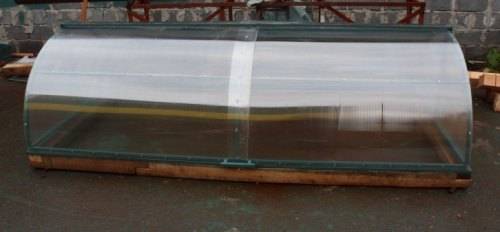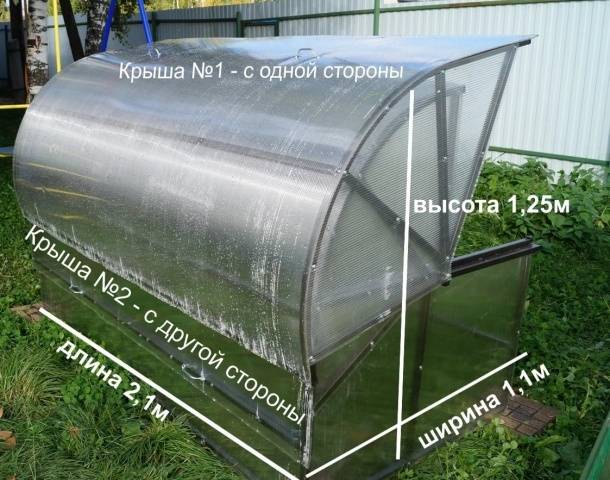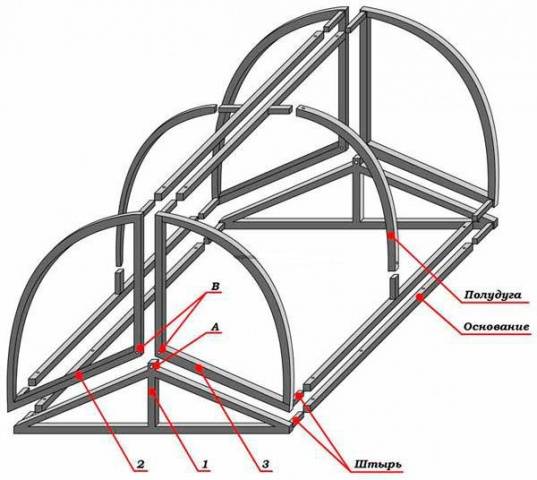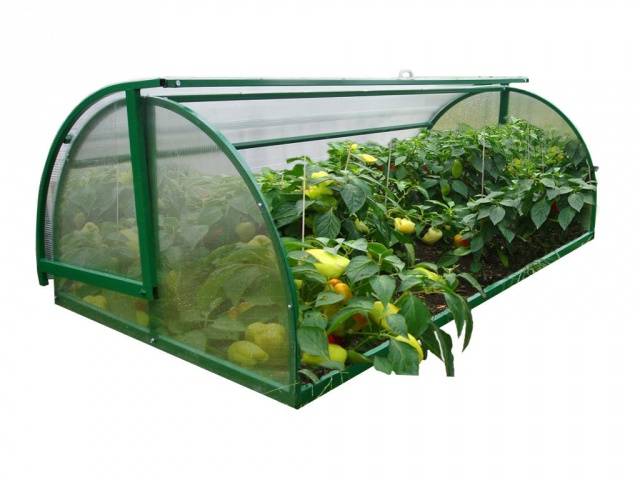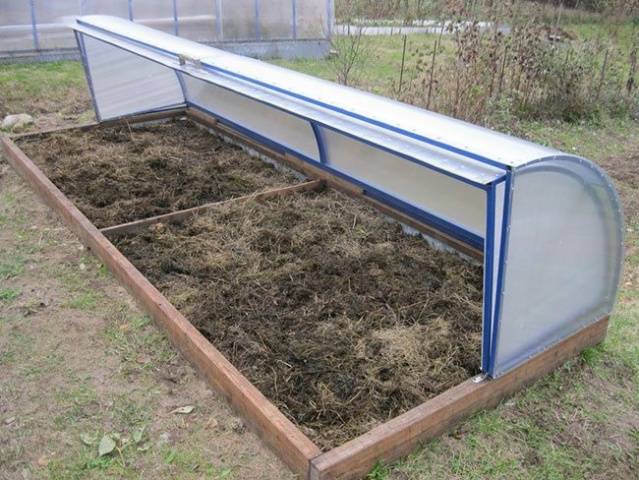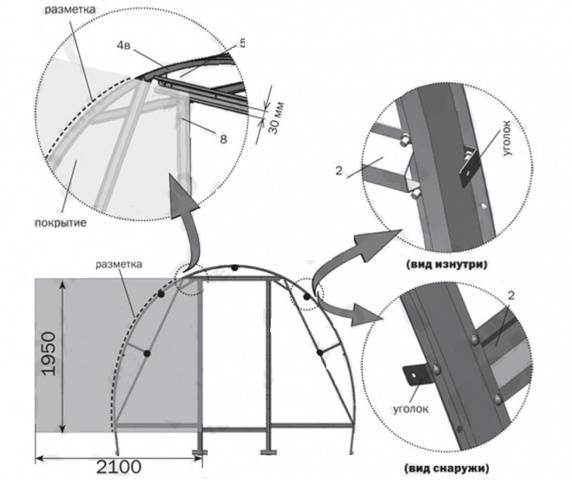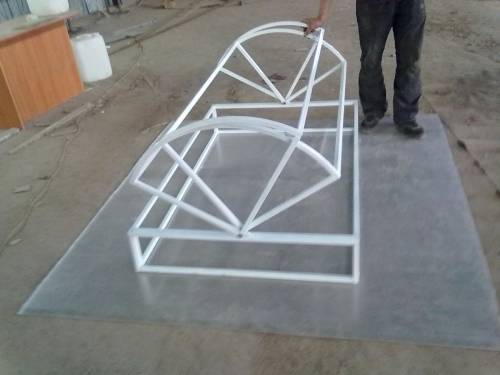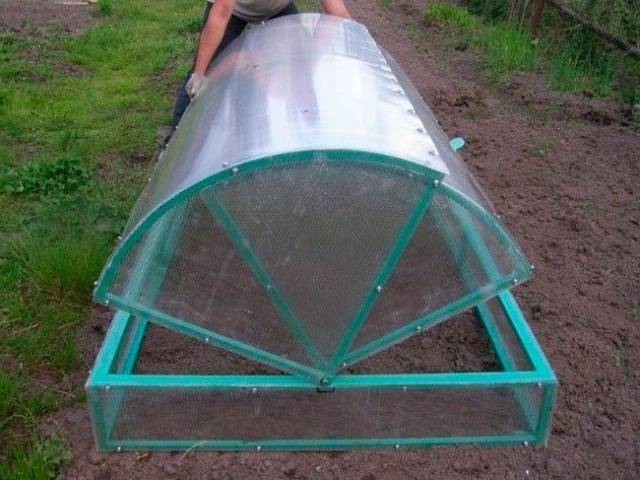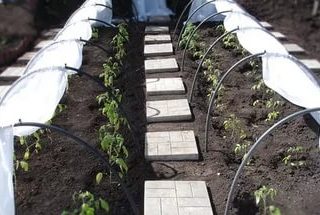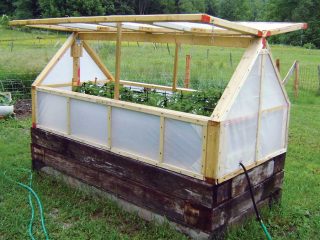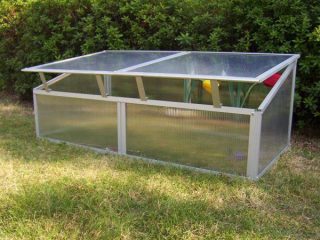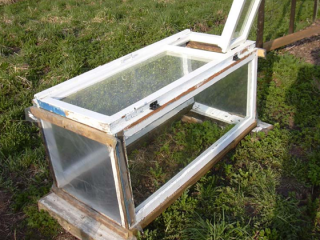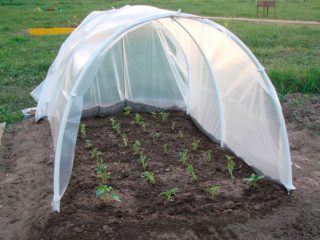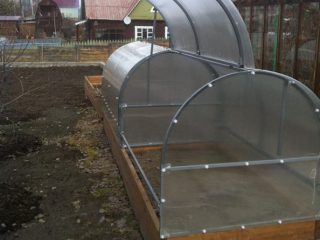Content
It is difficult for the owner of a small summer cottage to find space for installing a large greenhouse. In such conditions, greenhouses come to the rescue. There are many options for arranging simple structures covered with film or non-woven fabric. Greenhouses lined with polycarbonate have proven themselves best because of the ability to create a microclimate in them, the same as in a greenhouse. Factory-produced bread greenhouses are in great demand among summer residents. The design is so simple that you can make it yourself.
Features of a bread bin greenhouse design
The greenhouse design acquired its name due to the shape and method of opening the sash, reminiscent of a bread box. The shelter is intended for growing early greens, root crops and seedlings. Tall crops will be cramped in the greenhouse.
Breadbox dimensions
Breadbox greenhouses are produced by many manufacturers, and their sizes can be very different. There are no standards or special requirements for the design. The length of the greenhouse usually varies between 2-4 m. The height of the bread bin from the base to the top of the arch is limited to 1 m.Taking into account the open sash, the height can increase to 1.25 m.
Width is the only parameter that has a limitation. It all depends on the number of opening doors. The width of a structure with one sliding door is usually from 0.8 to 1.3 m. Access to plants in such a greenhouse is possible only from one side. If the bread bin is made too wide, you will have to trample on the bed while caring for the plants.
A double-leaf bread bin allows access to the garden bed from both sides. This makes it possible to increase the width of the structure. Factory-made greenhouses most often have a width of 2 m. For reference, the photo shows a drawing with the dimensions of the bread bin.
Drawing and features of the bread bin frame
Using the example of the presented drawing of a bread box greenhouse, we will now understand what elements the frame consists of. So, the base of the structure is a rectangular frame with vertical triangular ends, indicated in the diagram by the number 1. The upper part of the bread box frame is made of half-arcs. The elements form two doors independent of each other. They are attached to the top of the triangles located at the ends of the base using hinges. In the diagram, the attachment points are shown by points “A” and “B”. Each bread bin door has its own polycarbonate lining.
Both doors of the bread bin rotate freely along the axis, and precise adjustment of the size of the half-arcs eliminates the formation of gaps between the doors when closed.
When purchasing a factory-made greenhouse, the frame quickly folds according to the attached diagram. Depending on the dimensions, a purchased model will cost a summer resident from three to seven thousand rubles. It will be cheaper if you draw up drawings of the bread box greenhouse with your own hands and build a structure from materials available on the farm.
When drawing up drawings, it is important to take into account that the standard width of polycarbonate is 2.1 m. The lengths of the sheets are 3.6 and 12 m. The dimensions of the frame must be adjusted so that there are fewer scraps left. Depending on the dimensions, one sheet 3 or 6 m long is usually enough to cover the bread bin.
The second important point when drawing up drawings of a greenhouse made of polycarbonate bread box with your own hands is the exact observance of the size of the half-arcs. If the dimensions of the frames of the valves have a large run-up, when closed there will be a gap between them. A draft will negatively affect the development of plantings inside the greenhouse.
When making a bread box yourself, the frame is made from any pipes. It can be plastic, aluminum, galvanized or just ferrous metal. Only the latter material is highly susceptible to corrosion, and must be carefully protected by priming and painting. It is advisable to take the pipes for the frame not round, but square. They are easier to connect and cover with polycarbonate. And the greenhouse itself will acquire an aesthetic appearance.
Advantages and disadvantages of a bread box
To decide whether a breadbox-shaped greenhouse is suitable for your site, let's look at its advantages and disadvantages.
First, let's look at the advantages of the design:
- Compact dimensions allow you to place the greenhouse in any area of the yard. If desired, the shelter can be moved to another place. The light weight of the product makes it possible to transport it by two people.
- The shape of the shelter allows for 100% useful use of the garden bed area. A lot of seedlings can be placed, which cannot be told by the appearance of a compact greenhouse.
- The free opening of the doors allows you to quickly care for the plantings without keeping them in the cold for a long time. Opening only one flap on the leeward side provides good ventilation without drafts.
- The streamlined arched shape makes the structure stable in strong gusts of wind. A durable semicircular polycarbonate roof will withstand a snowy winter. The greenhouse does not need to be put away for storage, but left standing in its place.
- A big advantage of polycarbonate is the protection of plants from the harmful effects of UV rays. Daylight is scattered throughout the bread bin.
- A factory-made greenhouse is easy to assemble and disassemble in a short time. If desired, you can design a bread box yourself according to individual sizes.
The only drawback of the greenhouse is the height limitation, which does not allow the cultivation of tall crops.
Choosing the optimal location for installing a bread bin
A compact polycarbonate product will fit in any area of the yard, but it is advisable to choose an area that is not shaded by trees or tall buildings. It is important to pay attention to the cardinal directions. It is optimal to install the greenhouse so that one side faces south and the other faces north. With this arrangement, the plants will receive maximum warmth, plus it is possible to adjust the light for different plants.
Installing a greenhouse yourself
So, you purchased a factory-made product or decided to make it yourself. You already have a drawing and material at hand, it’s time to get to work:
- The arched frame, covered with polycarbonate, is very light, but it is advisable to organize a simple foundation for it. It is enough to lay a row of red bricks, hollow blocks, or simply knock down a timber box in a shallow trench dug according to the dimensions of the frame. In the latter case, the wood is treated with a protective impregnation against rot.
- Guided by the drawing, assemble the frame. Test the doors for free opening. If everything is fine, place the greenhouse on the foundation and secure it with anchor bolts. This procedure must be done to protect against capsizing.
- The installed frame is tested again for free opening of the sashes. Make sure there are no distortions. It is important to check the tightening of the bolts again. After this, you can begin covering the frame with polycarbonate.
- Lay out a single sheet of polycarbonate on a flat surface without stones or other sharp protrusions. Next, mark up the required fragments. It is better to cut polycarbonate with a jigsaw. Cover the ends of each workpiece with plugs to prevent water and dirt from penetrating into the cells of the material.
- Place the finished polycarbonate fragments on the frame with the protective film facing out. Drill holes at the fastening points and secure the sheets with special hardware with a sealing washer.
Check the sheathed structure again to ensure that the doors open freely. If everything was done correctly, each side of the bread bin should move freely to the side.
In this video, the assembled greenhouse bread box:
Summer residents who had to change the film on primitive shelters every season will appreciate the use of a polycarbonate bread bin.
